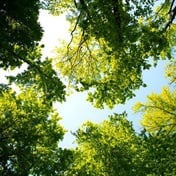Amid the highest recorded pollen counts in history, Health24 will be bringing you exclusive pollen count updates courtesy of the UCT Lung Institute's Allergy and Immunology Unit.
Here are the major city updates for 16 January:
Cape Town (Western Cape)
Low fungal spores, grasses, trees and weeds were seen during this hot, dry sampling week. The tree pollen was mostly eucalyptus which is insect pollinated, but flowering strongly in the Cape at present and very low numbers of white stinkwood. Weed pollen detected was daisy and English Plantain.
Count: 6 (moderate) [Last week: 5 (low)]
Johannesburg (Gauteng)
Grass counts decreased from those of the previous week, but occasional moderate counts were recorded. Tree levels were low and included: birch, olive, oak, mulberry, eucalyptus and plane. Low weed levels included: goosefoot, daisy and English Plantain. Mould levels were uniformly low.
Count: 8 (moderate) [Last week: 18 (moderate)]
Bloemfontein (Free State)
Grass levels increased sharply to moderate levels. Tree pollen was low and included acacia, buddleja, cypress, eucalyptus, oak and olive. Weed pollen was similarly low and consisted of daisy and English Plantain. Mould levels were consistently low.
Count: 14 (moderate) [Last week: 10 (moderate)]
Kimberley (Northern Cape)
Grass counts increased sharply at the end of this sampling week and although the mean score was low, a significant level was reached on the last day of the measured week. Low levels were detected for trees (acacia, white stinkwood, olive and casuarina) and weeds (goosefoot and daisy).
The mean mould count was low, but significant scores were seen for Alternaria, an allergenic fungal spore, or mould.
Count: 7 (moderate) [Last week: 1 (very low)]
Durban (KZN)
Fungal spores increased to high levels again this week. Grasses also increased, exceeding 10 grains/cu M on the last day of the sampling week, although the average count was low. Tree pollen numbers were low and only mulberry pollen was detected. Weed shrub pollens included fern, dasiy and Rumex pollens.
Count: 7 (moderate) [Last week: 12 (moderate)]
Port Elizabeth (Eastern Cape)
Mould counts were low, but small spikes were seen for Cladosporium and ascospores. The tree levels were low and pollen detected included acacia, palm, olive, Rutaceae (the citrus family) and Casuarina. Weed pollen was also low and consisted of: Protea and erica.
Count: 2 (very low) [Last week: 2 (very low)]
See the full report HERE.
Reference ranges:
Overall, Trees, Grasses and Weeds all use the same values (grains per cubic metres of air).
Overall count is the daily average of pollen grains per cubic metres of air (trees plus grasses plus weeds)
In partnership with the the UCT Lung Institute's Allergy and Immunology Unit.
As the pollen problem worsens, precise and expanded monitoring becomes even more essential. And here's how you can help.
Image credit: Heather Mount, Unsplash




 Publications
Publications
 Partners
Partners











